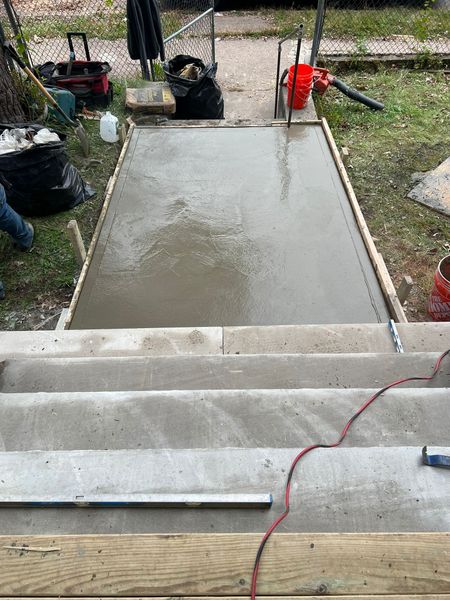Introduction
As we age, our homes should evolve to meet our changing needs. The kitchen, often considered the heart of the home, plays a vital role in our daily lives. Upgrading kitchens for aging in place ensures that this essential space remains functional, safe, and accessible as we grow older. This guide explores practical solutions Website link to modify kitchens for senior living while maintaining style and comfort.
In this article, we will delve into various aspects of kitchen upgrades tailored for aging in place. We’ll cover everything from layout adjustments to appliance selections, emphasizing how these changes can enhance safety and usability. So, whether you're planning a complete kitchen remodel or just looking to make a few tweaks here and there, you’re in the right spot.
Understanding Aging in Place
What Does 'Aging in Place' Mean?
Aging in place refers to the ability of individuals to live independently in their homes as they get older. This concept emphasizes creating an environment that allows seniors to maintain their autonomy while ensuring safety and comfort.
Why Focus on the Kitchen?
The kitchen is where we gather with family and friends, prepare meals, and share moments. As such, it deserves special attention when considering modifications for aging in place. A well-designed kitchen can significantly enhance quality of life by reducing risks of accidents and making daily tasks easier.
Upgrading Kitchens for Aging in Place: Practical Solutions
1. Assessing Your Current Kitchen Layout
Before diving into renovations, take a good look at your existing kitchen layout. Is it spacious enough for easy movement? Are there any obstacles that could pose risks?
Key Considerations:
- Clear Pathways: Ensure there’s ample space between countertops and appliances. Accessibility: Check if cabinets are easily reachable without excessive bending or stretching.
2. Incorporating Universal Design Principles
Universal design aims to create spaces usable by all people regardless of age or ability. Here’s how you can apply these principles:
- Lever Handles: Replace traditional knobs with lever handles on doors and cabinets. Adjustable Heights: Consider installing adjustable height countertops or tables.
3. Choosing the Right Appliances
Select appliances that accommodate changing needs over time. Look for features like:
- Side-by-Side Refrigerators: Easier access to food items without bending over. Smart Technology: Voice-activated devices can simplify cooking tasks.
4. Optimizing Storage Solutions
Proper storage is crucial in an aging-in-place kitchen:
Smart Storage Options:
- Pull-out shelves can make it easier to reach items without straining. Use clear bins or labels to help identify contents quickly.
5. Enhancing Lighting Features
Good lighting is essential for safety and functionality:
- Install under-cabinet lighting to illuminate workspaces. Use dimmable lights so users can adjust brightness according to their needs.
6. Flooring Choices Matter
Selecting appropriate flooring materials helps reduce fall risks:
Recommended Flooring Options:
- Non-slip vinyl tiles provide both safety and ease of maintenance. Avoid area rugs that could cause tripping hazards.
Safety Features That Count
7. Installing Grab Bars and Handrails
Integrating grab bars near sinks and stoves can offer added support during cooking or cleaning tasks.
8. Utilizing Non-Slip Surfaces
Non-slip surfaces reduce the risk of falls—essential for any aging-in-place kitchen upgrade.
9. Ensuring Proper Ventilation
Good ventilation minimizes smoke buildup when cooking—consider installing range hoods or exhaust fans that are easy to clean.
Budgeting Your Kitchen Upgrade Project
10. Setting a Realistic Budget
Upgrading your kitchen doesn’t have to break the bank:
Tips:
- Prioritize essential upgrades first—focus on safety over aesthetics. Research local costs for materials vs DIY options.
Design Trends That Support Aging in Place
11. Minimalist Designs Are In!
Clutter-free spaces promote safety—minimalist designs focus on function while being visually appealing.
12. Open Concepts Enhance Movement Flow
Open-concept kitchens allow easier navigation—a significant benefit as mobility may decrease with age.
FAQ Section
1. What are some common modifications for kitchens designed for aging in place?
Common modifications include installing lever handles, pull-out shelves, non-slip flooring materials, and proper lighting fixtures aimed at enhancing visibility while cooking or preparing meals.
2. How much does it cost to upgrade a kitchen for aging in place?
Costs vary widely based on scope; minor upgrades might start around $5,000 while extensive renovations can reach upwards of $50,000 depending on materials and labor involved.

3. Are smart appliances worth the investment?
Absolutely! Smart appliances not only improve convenience but also offer features that cater specifically to seniors’ needs—like voice commands or automatic shut-off functions which enhance safety during use.
4. How do I ensure my upgraded kitchen stays stylish yet functional?
Opting for timeless designs with neutral color palettes can keep your space feeling contemporary while ensuring usability remains front-of-mind through thoughtful selections like ergonomic tools or adjustable heights where possible.
5. What role does lighting play in an aging-friendly kitchen?
Adequate lighting reduces strain on eyes during meal prep; using layered lighting approaches (ambient + task lights) enhances visibility overall fostering safer environments when navigating around sharp tools/appliances!
6. Can I DIY my upgrades if I’m on a tight budget?
Yes! Many minor upgrades (like adding grab bars) can be accomplished with basic tools; however always consult professionals before undertaking more complex installations (like cabinetry alterations) due their potential structural implications involved!
Conclusion
Upgrading kitchens for aging in place is not just about aesthetics; it's about creating a functional environment that prioritizes safety and accessibility as we grow older. By focusing on universal design principles, choosing suitable appliances, optimizing storage solutions, enhancing lighting features, selecting appropriate flooring materials—all these elements come together beautifully!
Remember that investing time into thoughtful renovations today will yield benefits tomorrow—allowing you—or your loved ones—to enjoy this cherished space without limitations!
If you have any further questions about specific upgrades tailored towards seniors' needs feel free ask away—you deserve all information available regarding enhancing your home’s comfortability & longevity!